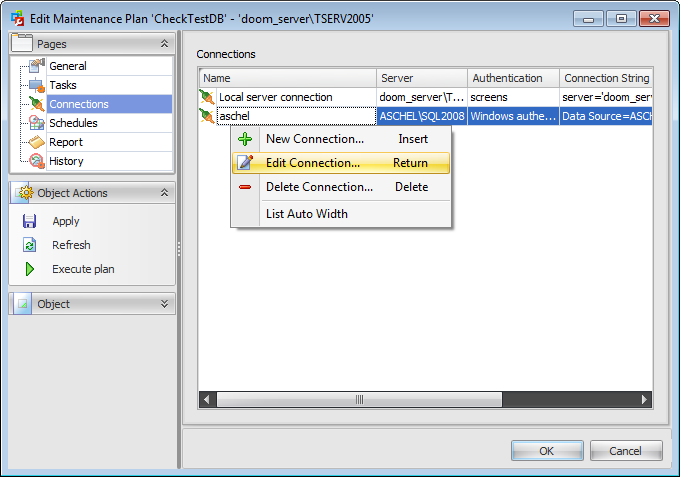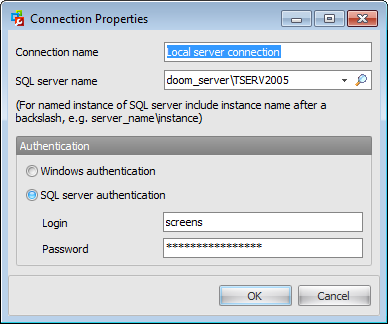Online Documentation for SQL Administrator for SQL Server
Adding connections
In this section you can view the list of available server connections.

The grid displays the following connection parameters: Name, Server, Authentication, Connection String.
It always contains the Local Server connection item that cannot be dropped. By default Local Server connection is the connection to the server on which the maintenance plan is being created.
Using the context menu you can:
![]() add a new connection;
add a new connection;
![]() edit an existing connection;
edit an existing connection;
![]() drop an existing connection.
drop an existing connection.
Alternatively, you can use the 'Insert' button to create a connection, 'Enter' button to edit connection and 'Delete' button to drop connection.
When you are adding or editing a connection the following window appears:

Here you can set common connection properties.
Connection name
Enter a name for the new connection.
SQL Server name
Select server to connect from the drop-down list. Click the ![]() Search button to search for servers from a local network. In the list appeared choose the necessary server and press the 'OK' button.
Search button to search for servers from a local network. In the list appeared choose the necessary server and press the 'OK' button.
Note: If server name is not displayed in this list it can be entered manually.
Authentication
Specify the type of Microsoft® SQL Server™ authentication to be used for the connection: ![]() Windows authentication or
Windows authentication or ![]() SQL Server authentication.
SQL Server authentication.
![]() Windows Authentication
Windows Authentication
SQL Administrator identifies user by his domain name and password which are defined automatically according to his Windows domain user account.
![]() SQL Server authentication
SQL Server authentication
SQL Administrator identifies user by his server login and password. Login and password management is accomplished by Login Manager.
If ![]() Server authentication is selected as the authentication type, you should provide authorization settings: Login and Password. Analyzing them a system determines information and therefore object access permissions.
Server authentication is selected as the authentication type, you should provide authorization settings: Login and Password. Analyzing them a system determines information and therefore object access permissions.



































































